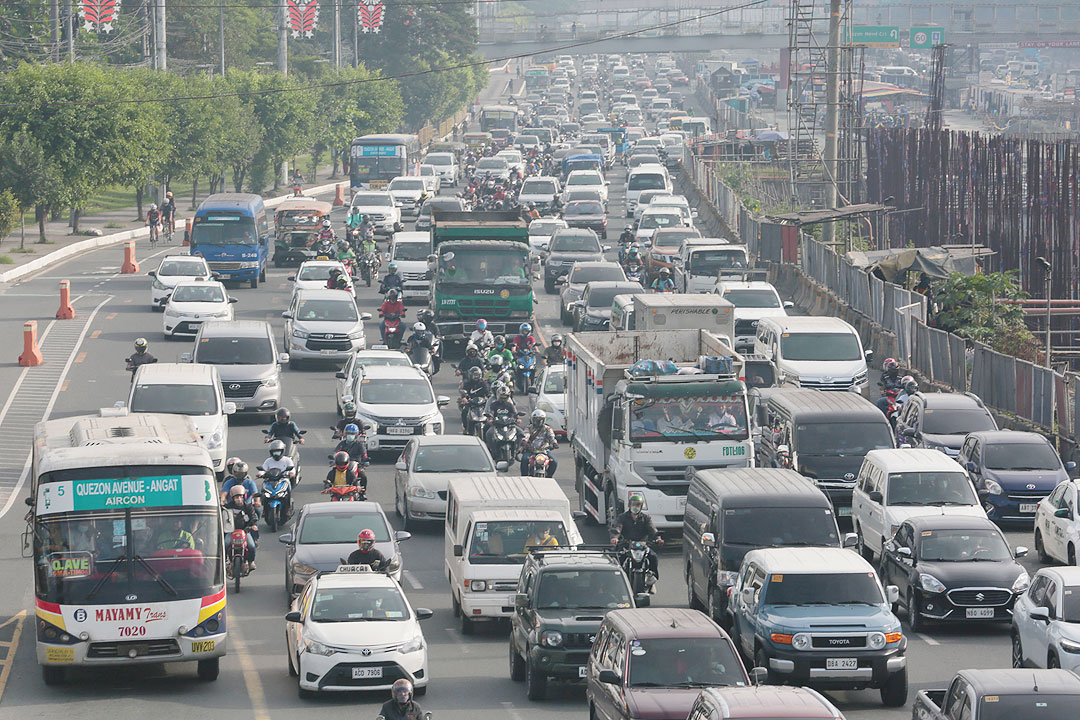New coronavirus variants may cloud PHL recovery outlook, BSP chief says
New coronavirus variants may cloud PHL recovery outlook, BSP chief says
New coronavirus variants may cloud PHL recovery outlook, BSP chief says
December 2, 2021 12:32 am

BANGKO SENTRAL ng Pilipinas (BSP) Governor Benjamin E. Diokno on Wednesday said economic activity is improving but the emergence of new coronavirus disease 2019 (COVID-19) variants may cloud the pace of recovery.
“Economic activity is vastly improving. Yet, the overall momentum of the economic recovery remains foggy as long as a big part of the population remains unvaccinated and there is still a possible emergence of more virulent variants,” Mr. Diokno said in a speech at a virtual forum organized by the Joint Foreign Chambers of the Philippines on Wednesday.
According to the Department of Health, 36.4 million Filipinos have been fully vaccinated against COVID-19 as of Nov. 30. The Philippines aims to fully vaccinate 54 million people by the end of the year.
While 96% or 9.4 million of Metro Manila’s target population is now fully vaccinated, the vaccination rates in poorer regions remain very low.
Third-quarter gross domestic product (GDP) went up by an annual 7.1%, slower than the revised 12% growth in the second quarter after the government placed strict restrictions in Metro Manila to curb the Delta-driven surge in COVID-19 cases. Year to date, GDP grew by 4.9%, the upper end of the government’s 4-5% target.
“The BSP is committed to an accommodative monetary policy stance supportive of infusing liquidity in the financial system and recovery of the economy, Mr. Diokno said.
McKinsey & Co. Philippines Acting Managing Partner Jon Canto said in the same forum that the Philippine economy could return to pre-pandemic levels by late next year or early 2023, depending on the level of vaccination against COVID-19 and the spread of new variants.
“The fearless forecast at the moment, looking at where we stand today in the third quarter is that if on the positive side we get to a muted recovery, we could go back — from a GDP (gross domestic product) perspective — to pre-COVID levels by the third quarter of next year,” he said.
“If the virus and the new variants then take longer hold, that could extend to probably the
fi
rst quarter of 2023.”
The consumer goods segment is growing in terms of essentials like food and health products, which is mostly driven by the higher end of the market, Mr. Canto said.
Industrial manufacturing could rebound due to a global demand in exports, but supply chain bottlenecks will likely hamper this growth.
Mr. Canto said retail trade initially benefited from consumer stockpiling, but
“tingi”
retail — or selling products in smaller portions than the usual retail — is coming back.
Pent-up construction demand will continue, with real estate growth likely driven by the residential sector catering to wealthy and overseas Filipino worker segments.
Business process outsourcing and remittances could continue to drive growth, the McKinsey executive said, while the energy sector will continue to expand as demand from residential and industrial customers improve.
“We need to find a way to develop the baseload capacity,” Mr. Canto said.
McKinsey identi
fi
ed five trends that could support Philippine economic growth in the next few years, including manufacturing hub advancement and green infrastructure investments.
Preparing companies for digital technologies, reskilling employees, and building high-value food industries will also boost growth, Mr. Canto said.
Socioeconomic Planning Secretary Karl Kendrick T. Chua earlier said pre-pandemic nominal GDP level would be achieved by 2022, “even as early as the first quarter.”
However, Citigroup Hong Kong Chief Economist for Asia Johanna Chua said at the same forum that it is not enough for the Philippines to go back to pre-COVID levels of output.
“If you go back to pre-COVID levels of output in 2022, India and Indonesia are already going to get back to that this year. China already got back to that last year,” she said.
“Can we even get back to pre-COVID levels of trend growth? The last five years prior to COVID, Philippines was going on average about 6.6%, can we get back there?”
Meanwhile, Albay Representative Jose Ma. Clemente S. Salceda, who chairs the House Ways and Means Committee, said he expects the Philippines to be the fastest-growing ASEAN economy in 2022.
He said the young median age of the country’s labor force support economic recovery.
“This is the single biggest strength of the Philippines that has always been missed out in most of the forecasts of any outlook about the Philippines,” he said. —
Jenina P. Ibañez
with
L.W.T.Noble
